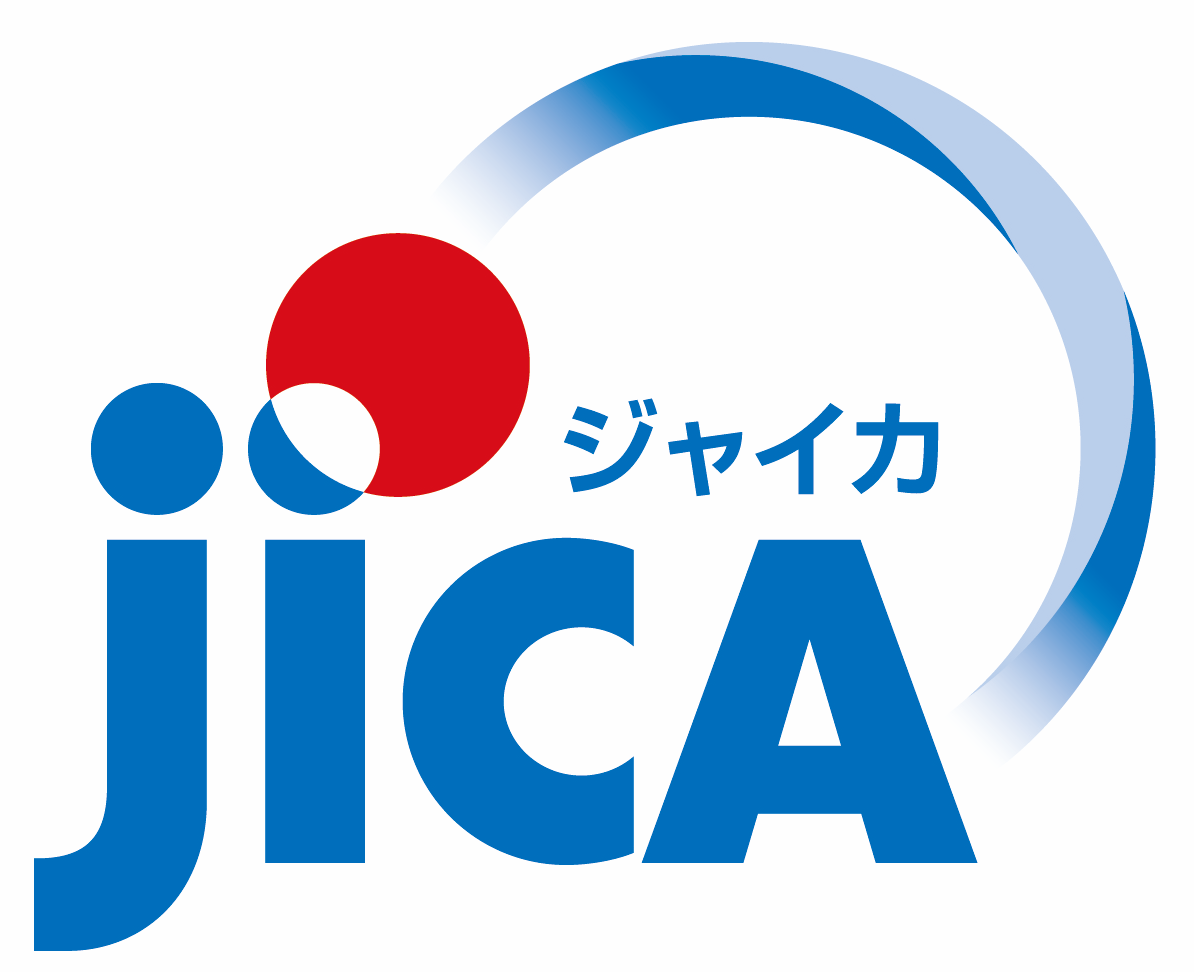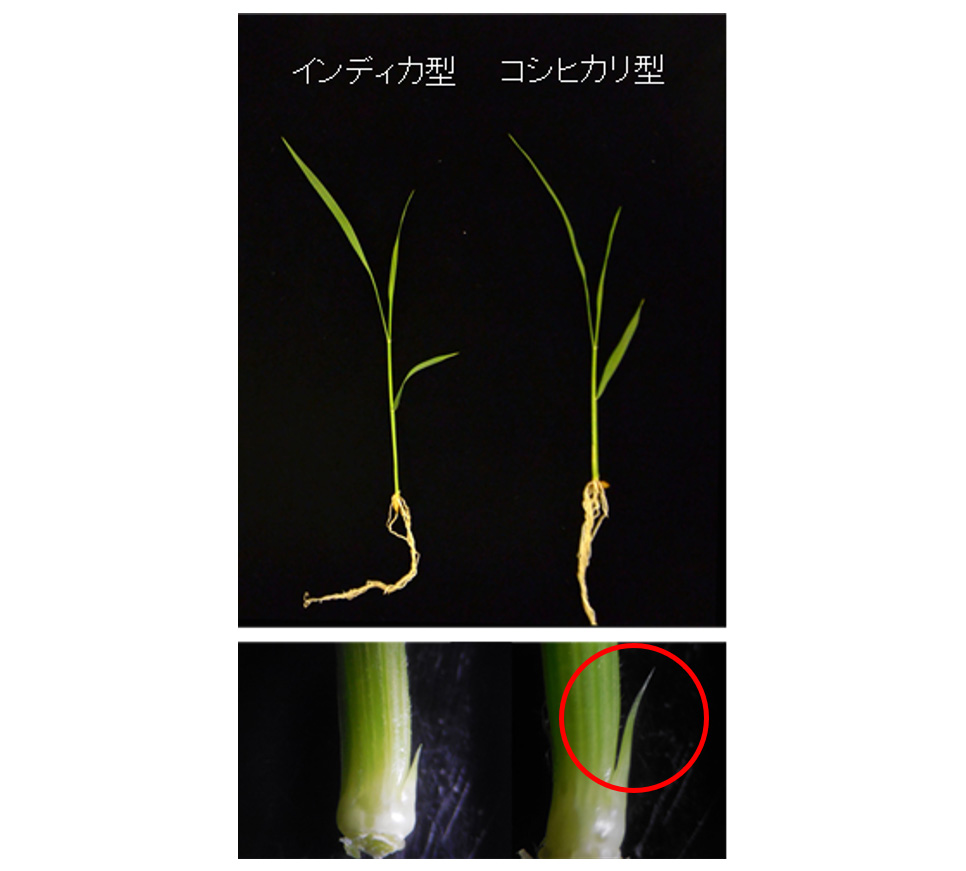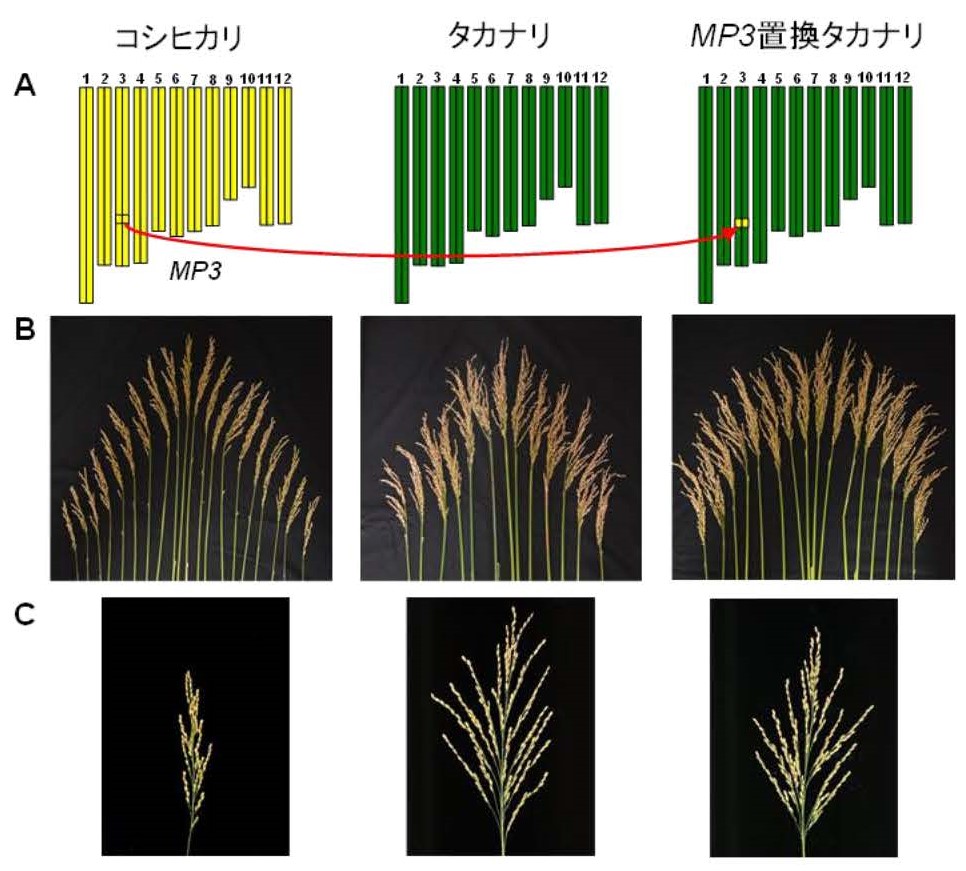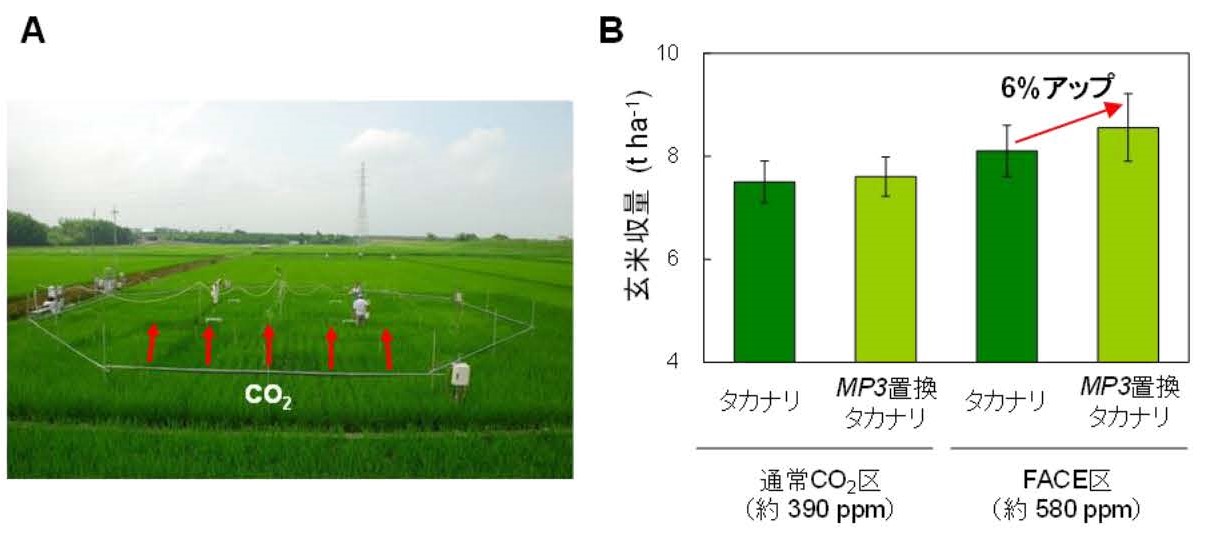研究成果
Discovery of Koshihikari-Derived Gene that Increases Rice Yield in High CO2 Environment
―Contributing to sustainable rice cultivation under climate change―
Discovery of Koshihikari-Derived Gene that Increases Rice Yield in High CO2 Environment
―Contributing to sustainable rice cultivation under climate change―
|
Main Points
|
Overview
A joint research group of JIRCAS, National Agriculture and Food Research Organization (NARO), Nagoya University, Yokohama City University, RIKEN, Meiji University, and Kazusa DNA Research Institute has identified MP3 (MORE PANICLES 3), a gene in ‘Koshihikari’ rice cultivar that promotes the growth of axillary buds that form the base of rice panicles and increases the number of panicles. The MP3 gene sequence (genotype) differs among rice cultivars, and some Japanese rice cultivars, such as ‘Koshihikari’, have a genotype that increases the number of panicles, which is not found in indica rice cultivars overseas. Since the high-yielding Japanese rice cultivar ‘Takanari’ has MP3 of the indica type, we developed a near-isogenic rice with the Koshihikari-derived MP3, which increased the number of panicles by 20 to 30%. Furthermore, in a paddy field test that reproduced high atmospheric CO2 levels expected in the future, it was found that the developed rice increased its yield by 6% compared to Takanari. With the ongoing global climate change, the development of technologies to realize sustainable crop production is an urgent issue, and rice breeding strategy using MP3 is one of such technologies expected to contribute to the stable production of rice under high CO2 conditions in the future.
The results of this research were published in the online edition of The Plant Journal, an international scientific journal, on March 28, 2023 (Japan time).
This research was supported by the Ministry of Agriculture, Forestry and Fisheries (MAFF) grants for ‘Genomics-based Technology for Agricultural Improvement (RBS2005)’ and ‘Development of Technologies for Mitigation and Adaptation to Climate Change in Agriculture, Forestry, and Fisheries’; JST/JICA grant for the SATREPS Project “Breakthrough in Nutrient Use Efficiency for Rice by Genetic Improvement and Fertility Sensing Techniques in Africa (JPMJSA1608); Japan Science and Technology Agency (JST) grant on Core Research for Evolutionary Science and Technology (CREST) for ‘Development of climate-resilient crops by employing ROOTomics’ (JPMJCR17O1); and the Grants-in-Aid for Scientific Research (20H02972, 16H06464, 16H06466, 21H04728).
Publication
- Authors
- Takai, T., Taniguchi, Y., Takahashi, M., Nagasaki, H., Yamamoto, E., Hirose, S., Hara, N., Akashi, H., Ito, J., Arai-Sanoh, Y., Hori, K., Fukuoka, S., Sakai, H., Tokida, T., Usui, Y., Nakamura, H., Kawamura, K., Asai, H., Ishizaki, T., Maruyama, K., Mochida, K., Kobayashi, N., Kondo, M., Tsuji, H., Tsujimoto, Y., Hasegawa, T., Uga, Y.
- Title
- MORE PANICLES 3, a natural allele of OsTB1/FC1, impacts rice yield in paddy fields at elevated CO2 levels
- Journal
- The Plant Journal
DOI: https://doi.org/10.1111/tpj.16143
For Inquiries
JIRCAS
- President :
- KOYAMA Osamu
- Program Director :
- NAKASHIMA Kazuo (Food Program)
- Principal Investigators :
- TAKAI Toshiyuki (Crop, Livestock and Environment Division)
TSUJIMOTO Yasuhiro (Crop, Livestock and Environment Division) - Press Coordinator:
- OMORI Keisuke (Information and Public Relations Office)
E-mail:koho-jircas@ml.affrc.go.jp
NARO
- Principal Investigators:
- HASEGAWA Toshihiro (Institute for Agro-Environmental Sciences), TANIGUCHI Yojiro (Institute of Crop Science), UGA Yusaku (Institute of Crop Science)
- Press Coordinators:
- SUGIYAMA Megumi (Institute for Agro-Environmental Sciences)
E-mail:niaes_kouhou@ml.affrc.go.jp
MIYAO Akio (Institute of Crop Science)
E-mail:www-nics@naro.affrc.go.jp
Nagoya University・Yokohama City University
- Principal Investigator:
- TSUJI Hiroyuki
- Press Coordinators:
- Nagoya University Public Relations Office
E-mail:nu_research@adm.nagoya-u.ac.jp
UEMURA Ichitaro (Yokohama City University Public Relations Section)
E-mail:koho@yokohama-cu.ac.jp
RIKEN
- Principal Investigator:
- MOCHIDA Keiichi (Center for Sustainable Research Sciences
- Press Coordinator:
- Public Relations Office
E-mail:ex-press@ml.riken.jp
Meiji University
- Principal Investigator:
- YAMAMOTO Eiji (Graduate School of Agriculture)
- Press Coordinator:
- FUKAMI Ayaka (Public Relations Section)
E-mail:koho@mics.meiji.ac.jp
Kazusa DNA Research Institute
- Principal Investigator:
- NAGASAKI Hideki (Laboratory of Plant DNA Analysis)
- Press Coordinator:
- HIRAOKA Kiriko (Public Relations and Research Promotions Group)
Japan Science and Technology Agency
- Coordinator:
- Department of International Affairs
E-mail:global@jst.go.jp - Press Coordinator:
- Public Relations Section
E-mail:jstkoho@jst.go.jp
Japan International Cooperation Agency
- Coordinator:
- Agriculture and Rural Development Group 2
E-mail:edga2@jica.go.jp
Reference Information
Change in number of panicle and number of spikelet per panicle due to MP3 substitution
When the Takanari-type MP3 is replaced by Koshihikari-type MP3 through crossbreeding, the number of panicles increases with almost no decrease in the number of spikelets per panicle.
Image of rice chromosomes (A), number of panicles per plant (B), and panicle (C) of Koshihikari, Takanari, and Takanari with Koshihikari-type MP3.
Effect of MP3 on increasing yield under high CO2
(A) A paddy field environment (FACE) in which a portion of the paddy field is covered with a regular octagonal ring and CO2 is released from a tube connected to the ring, resulting in a CO2 concentration approximately 200 ppm (390 ppm → 580 ppm) higher than the outside air. The FACE experimental facility is located in Tsukubamirai City, Ibaraki Prefecture.
(B) Comparison of yields grown in the normal CO2 and FACE treatment condition, showing that MP3-substituted Takanari in the FACE plot produced approximately 6% higher yields than Takanari.












